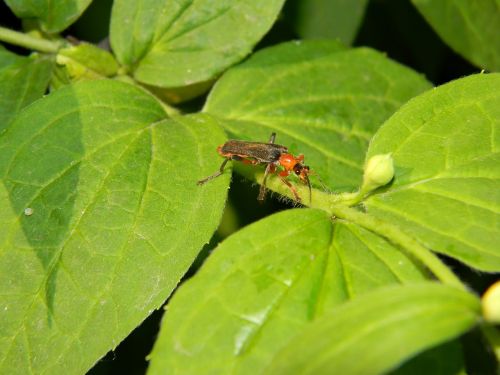Want to know how to get rid of thrips in the house? You’re not alone! Apparently, thrips are a common problem among many gardeners and homeowners. You can usually find them in greenhouses and gardens.
Thrips can easily damage your plants, leaving them jagged, pale, and mottled. It can be difficult to spot them because they’re so tiny – only about 1/25-inch long, making it harder to see them without a lens. Thrips can fly and jump, plus they’re very fast and agile.

Thrips are also called storm flies, thunderblights, thunderbugs, storm bugs, corn lice, freckle bugs, harvest bugs, corn fleas, corn flies, woodworm, terebrantia, and physiopod.
How Do Thrips Get into Your Home?
Thrips feed on leaves and flowers. These insects can enter your home when homeowners bring in infested plants without knowing. Thrips also need water, so they travel indoors finding damp spots. You won’t be able to notice them until they ravage your plants and leave their fecal matter on the leaves of your plants.
How Serious are Thrip Infestations?
Thrips can bite your skin and can irritate your toes and feet if you walk through the grass barefooted. These bites aren’t serious, and they don’t have any long-term effects. Thrips inside your home feed on your plants, stunting their growth, or even killing them.
How to Get Rid of Thrips
Fortunately, it’s easy to get rid of thrips and preventing them from coming back. But make sure not to use any synthetic pesticides because these bugs can be easily immune to pesticides, worsening your thrip situation.
Here are some of the tips on how to get rid of thrips in the house organically:
Hose down your plants
Take your indoor plants outside and hose them down. This can easily remove the bugs and take down their population. You can also rinse the leaves on your sink or shower. Remember to use tepid water and make sure not to overwater your plants because this can lead to other problems.
Wash your houseplant with diluted mild soap
Washing your indoor plants with mild soap can also do the trick – just don’t forget to rinse it with water afterward. Make sure to wash the underside of the leaves as well because thrips commonly hide there. However, different plants have different reactions to soap, so make sure to test it on a few leaves first.
Use insecticidal soap
Other than diluting mild soap, you can also use an insecticidal soap. Soap can instantly kill thrips on contact. You can use a premixed organic soap which you can buy in your local garden shops, or you can make your own.
Spray the soap directly onto the affected leaves to kill the thrips. These soaps don’t have a residual effect, so you can apply it to your plant as often as you want until the bugs are killed. As with the diluted mild soap, test the insecticidal soap on a few leaves to see how your plant reacts.
Neem Oil
Neem oil is a natural insecticide that can help kill thrips and prevent infestations. Apply the neem oil or spray it directly to the affected part. Some of the bugs will die on contact, while some die after feeding on the leaves covered in neem oil.
You can also use hot pepper spray wax or a premixed horticultural oil, whichever is available. Both of these options also work in getting rid of thrips in indoor plants.
Use sticky traps
Even though they’re really small, thrips can stick to your sticky traps. These bugs are attracted to green, pink, white, yellow, and blue, so place sticky traps of this color near the infected houseplants so thrips can fly into them. It’s also an effective way of monitoring the gravity of the infestation or to check if there are any thrips on other houseplants.
The Benefits of Growing Your Plants Inside a Mini Greenhouse
Growing your plants inside a greenhouse has numerous benefits. It’s great for preventing thrip infestations because you’re placing your plants in an enclosed space. Other than that, here are other reasons why it pays to grow your plants inside a mini greenhouse:
Protection from pests and diseases
Aphids, caterpillars, cabbage worms, thrips, and other types of insects can harm your plants. They love to munch on your leaves, flowers, and fruit. Placing them inside a greenhouse lowers the risk of pest and disease infestation because your plants are separated from others. It’s also easier for gardeners to prevent thrips by closely monitoring the plants and keeping them separate.
Create a microclimate inside the greenhouse
With a mini greenhouse, you can start planting early regardless of the weather outside. Your plants can remain warm and happy inside the enclosure with the help of heating or cooling systems, grow lights, and other means of creating a microclimate.
Keep plants safe from the weather
The enclosed space can protect your plants from frost, ice, high winds, heavy rains, and drought. Once the weather warms, you can transplant your plants into your garden.
Final Thoughts on How to Get Rid of Thrips in the House
If there’s a thrip infestation in your garden or greenhouse, make sure to keep these tips on how to get rid of thrips in the house in mind. Once you find a method that works best for you and your plants, you’ll be able to successfully get rid of thrips and prevent future infestations.
